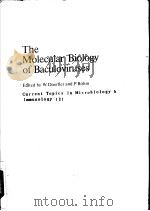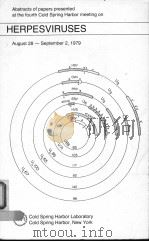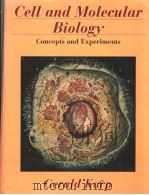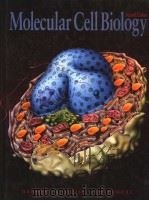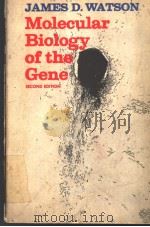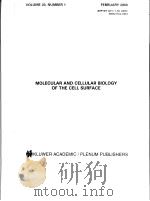《molecular biology of the cell》
| 作者 | 编者 |
|---|---|
| 出版 | 未查询到或未知 |
| 参考页数 | |
| 出版时间 | 没有确切时间的资料 目录预览 |
| ISBN号 | 无 — 求助条款 |
| PDF编号 | 820577478(仅供预览,未存储实际文件) |
| 求助格式 | 扫描PDF(若分多册发行,每次仅能受理1册) |

Chapter 1 Cells and Genomes1
THE UNIVERSAL FEATURES OF CELLS ON EARTH2
All Cells Store Their Hereditary Information in the Same Linear Chemical Code: DNA2
All Cells Replicate Their Hereditary Information by Templated Polymerization3
All Cells Transcribe Portions of Their Hereditary Information into the Same Intermediary Form: RNA4
All Cells Use Proteins as Catalysts5
All Cells Translate RNA into Protein in the Same Way6
Each Protein Is Encoded by a Specific Gene7
Life Requires Free Energy8
All Cells Function as Biochemical Factories Dealing with the Same Basic Molecular Building Blocks8
All Cells Are Enclosed in a Plasma Membrane Across Which Nutrients and Waste Materials Must Pass8
A Living Cell Can Exist with Fewer Than 500 Genes9
Summary10
THE DIVERSITY OF GENOMES AND THE TREE OF LIFE10
Cells Can Be Powered by a Variety of Free-Energy Sources10
Some Cells Fix Nitrogen and Carbon Dioxide for Others12
The Greatest Biochemical Diversity Exists Among Prokaryotic Cells12
The Tree of Life Has Three Primary Branches: Bacteria, Archaea,and Eukaryotes14
Some Genes Evolve Rapidly; Others Are Highly Conserved15
Most Bacteria and Archaea Have 1000-6000 Genes16
New Genes Are Generated from Preexisting Genes16
Gene Duplications Give Rise to Families of Related Genes Within a Single Cell17
Genes Can Be Transferred Between Organisms, Both in the Laboratory and in Nature18
Sex Results in Horizontal Exchanges of Genetic Information Within a Species19
The Function of a Gene Can Often Be Deduced from Its Sequence20
More Than 200 Gene Families Are Common to All Three Primary Branches of the Tree of Life20
Mutations Reveal the Functions of Genes21
Molecular Biology Began with a Spotlight on E. coli22
Summary22
GENETIC INFORMATION IN EUKARYOTES23
Eukaryotic Cells May Have Originated as Predators24
Modern Eukaryotic Cells Evolved from a Symbiosis25
Eukaryotes Have Hybrid Genomes27
Eukaryotic Genomes Are Big28
Eukaryotic Genomes Are Rich in Regulatory DNA29
The Genome Defines the Program of Multicellular Development29
Many Eukaryotes Live as Solitary Cells30
A Yeast Serves as a Minimal Model Eukaryote30
The Expression Levels of All the Genes of An Organism Can Be Monitored Simultaneously32
Arabidopsis Has Been Chosen Out of 300,000 Species As a Model Plant32
The World of Animal Cells Is Represented By a Worm, a Fly,a Fish, a Mouse, and a Human33
Studies in Drosophila Provide a Key to Vertebrate Development33
The Vertebrate Genome Is a Product of Repeated Duplications34
The Frog and the Zebrafish Provide Accessible Models for Vertebrate Development35
The Mouse Is the Predominant Mammalian Model Organism35
Humans Report on Their Own Peculiarities36
We Are All Different in Detail38
To Understand Cells and Organisms Will Require Mathematics,Computers, and Quantitative Information38
Summary39
Problems39
References41
Chapter 2 Cell Chemistry and Bioenergetics43
THE CHEMICAL COMPONENTS OF A CELL43
Water Is Held Together by Hydrogen Bonds44
Four Types of Noncovalent Attractions Help Bring Molecules Together in Cells44
Some Polar Molecules Form Acids and Bases in Water45
A Cell Is Formed from Carbon Compounds47
Cells Contain Four Major Families of Small Organic Molecules47
The Chemistry of Cells Is Dominated by Macromolecules with Remarkable Properties47
Noncovalent Bonds Specify Both the Precise Shape of a Macromolecule and Its Binding to Other Molecules49
Summary50
CATALYSIS AND THE USE OF ENERGY BY CELLS51
Cell Metabolism Is Organized by Enzymes51
Biological Order Is Made Possible by the Release of Heat Energy from Cells52
Cells Obtain Energy by the Oxidation of Organic Molecules54
Oxidation and Reduction Involve Electron Transfers55
Enzymes Lower the Activation-Energy Barriers That Block Chemical Reactions57
Enzymes Can Drive Substrate Molecules Along Specific Reaction Pathways58
How Enzymes Find Their Substrates: The Enormous Rapidity of Molecular Motions59
The Free-Energy Change for a Reaction, △G, Determines Whether It Can Occur Spontaneously60
The Concentration of Reactants Influences the Free-Energy Change and a Reaction's Direction61
The Standard Free-Energy Change, △G°, Makes It Possible to Compare the Energetics of Different Reactions61
The Equilibrium Constant and △G° Are Readily Derived from Each Other62
The Free-Energy Changes of Coupled Reactions Are Additive63
Activated Carrier Molecules Are Essential for Biosynthesis63
The Formation of an Activated Carrier Is Coupled to an Energetically Favorable Reaction64
ATP Is the Most Widely Used Activated Carrier Molecule65
Energy Stored in ATP Is Often Harnessed to Join Two Molecules Together65
NADH and NADPH Are Important Electron Carriers67
There Are Many Other Activated Carrier Molecules in Cells68
The Synthesis of Biological Polymers Is Driven by ATP Hydrolysis70
Summary73
HOW CELLS OBTAIN ENERGY FROM FOOD73
Glycolysis Is a Central ATP-Producing Pathway74
Fermentations Produce ATP in the Absence of Oxygen75
Glycolysis Illustrates How Enzymes Couple Oxidation to Energy Storage76
Organisms Store Food Molecules in Special Reservoirs78
Most Animal Cells Derive Their Energy from Fatty Acids Between Meals81
Sugars and Fats Are Both Degraded to Acetyl CoA in Mitochondria81
The Citric Acid Cycle Generates NADH by Oxidizing Acetyl Groups to CO282
Electron Transport Drives the Synthesis of the Majority of the ATP in Most Cells84
Amino Acids and Nucleotides Are Part of the Nitrogen Cycle85
Metabolism Is Highly Organized and Regulated87
Summary88
Problems88
References108
Chapter 3 Proteins109
THE SHAPE AND STRUCTURE OF PROTEINS109
The Shape of a Protein Is Specified by Its Amino Acid Sequence109
Proteins Fold into a Conformation of Lowest Energy114
The α Helix and the β Sheet Are Common Folding Patterns115
Protein Domains Are Modular Units from Which Larger Proteins Are Built117
Few of the Many Possible Polypeptide Chains Will Be Useful to Cells118
Proteins Can Be Classified into Many Families119
Some Protein Domains Are Found in Many Different Proteins121
Certain Pairs of Domains Are Found Together in Many Proteins122
The Human Genome Encodes a Complex Set of Proteins,Revealing That Much Remains Unknown122
Larger Protein Molecules Often Contain More Than One Polypeptide Chain123
Some Globular Proteins Form Long Helical Filaments123
Many Protein Molecules Have Elongated, Fibrous Shapes124
Proteins Contain a Surprisingly Large Amount of Intrinsically Disordered Polypeptide Chain125
Covalent Cross-Linkages Stabilize Extracellular Proteins127
Protein Molecules Often Serve as Subunits for the Assembly of Large Structures127
Many Structures in Cells Are Capable of Self-Assembly128
Assembly Factors Often Aid the Formation of Complex Biological Structures130
Amyloid Fibrils Can Form from Many Proteins130
Amyloid Structures Can Perform Useful Functions in Cells132
Many Proteins Contain Low-complexity Domains that Can Form “Reversible Amyloids”132
Summary134
PROTEIN FUNCTION134
All Proteins Bind to Other Molecules134
The Surface Conformation of a Protein Determines Its Chemistry135
Sequence Comparisons Between Protein Family Members Highlight Crucial Ligand-Binding Sites136
Proteins Bind to Other Proteins Through Several Types of Interfaces137
Antibody Binding Sites Are Especially Versatile138
The Equilibrium Constant Measures Binding Strength138
Enzymes Are Powerful and Highly Specific Catalysts140
Substrate Binding Is the First Step in Enzyme Catalysis141
Enzymes Speed Reactions by Selectively Stabilizing Transition States141
Enzymes Can Use Simultaneous Acid and Base Catalysis144
Lysozyme Illustrates How an Enzyme Works144
Tightly Bound Small Molecules Add Extra Functions to Proteins146
Multienzyme Complexes Help to Increase the Rate of Cell Metabolism148
The Cell Regulates the Catalytic Activities of Its Enzymes149
Allosteric Enzymes Have Two or More Binding Sites That Interact151
Two Ligands Whose Binding Sites Are Coupled Must Reciprocally Affect Each Other's Binding151
Symmetric Protein Assemblies Produce Cooperative Allosteric Transitions152
Many Changes in Proteins Are Driven by Protein Phosphorylation153
A Eukaryotic Cell Contains a Large Collection of Protein Kinases and Protein Phosphatases154
The Regulation of the Src Protein Kinase Reveals How a Protein Can Function as a Microprocessor155
Proteins That Bind and Hydrolyze GTP Are Ubiquitous Cell Regulators156
Regulatory Proteins GAP and GEF Control the Activity of GTP-Binding Proteins by Determining Whether GTP or GDP Is Bound157
Proteins Can Be Regulated by the Covalent Addition of Other Proteins157
An Elaborate Ubiquitin-Conjugating System Is Used to Mark Proteins158
Protein Complexes with Interchangeable Parts Make Efficient Use of Genetic Information159
A GTP-Binding Protein Shows How Large Protein Movements Can Be Generated160
Motor Proteins Produce Large Movements in Cells161
Membrane-Bound Transporters Harness Energy to Pump Molecules Through Membranes163
Proteins Often Form Large Complexes That Function as Protein Machines164
Scaffolds Concentrate Sets of Interacting Proteins164
Many Proteins Are Controlled by Covalent Modifications That Direct Them to Specific Sites Inside the Cell165
A Complex Network of Protein Interactions Underlies Cell Function166
Summary169
Problems170
References172
Chapter 4 DNA, Chromosomes, and Genomes175
THE STRUCTURE AND FUNCTION OF DNA175
A DNA Molecule Consists of Two Complementary Chains of Nucleotides175
The Structure of DNA Provides a Mechanism for Heredity177
In Eukaryotes, DNA Is Enclosed in a Cell Nucleus178
Summary179
CHROMOSOMAL DNA AND ITS PACKAGING IN THE CHROMATIN FIBER179
Eukaryotic DNA Is Packaged into a Set of Chromosomes180
Chromosomes Contain Long Strings of Genes182
The Nucleotide Sequence of the Human Genome Shows How Our Genes Are Arranged183
Each DNA Molecule That Forms a Linear Chromosome Must Contain a Centromere, Two Telomeres, and Replication Origins185
DNA Molecules Are Highly Condensed in Chromosomes187
Nucleosomes Are a Basic Unit of Eukaryotic Chromosome Structure187
The Structure of the Nucleosome Core Particle Reveals How DNA Is Packaged188
Nucleosomes Have a Dynamic Structure, and Are Frequently Subjected to Changes Catalyzed by ATP-Dependent Chromatin Remodeling Complexes190
Nucleosomes Are Usually Packed Together into a Compact Chromatin Fiber191
Summary193
CHROMATIN STRUCTURE AND FUNCTION194
Heterochromatin Is Highly Organized and Restricts Gene Expression194
The Heterochromatic State Is Self-Propagating194
The Core Histones Are Covalently Modified at Many Different Sites196
Chromatin Acquires Additional Variety Through the Site-Specific Insertion of a Small Set of Histone Variants198
Covalent Modifications and Histone Variants Act in Concert to Control Chromosome Functions198
A Complex of Reader and Writer Proteins Can Spread Specific Chromatin Modifications Along a Chromosome199
Barrier DNA Sequences Block the Spread of Reader-Writer Complexes and thereby Separate Neighboring Chromatin Domains202
The Chromatin in Centromeres Reveals How Histone Variants Can Create Special Structures203
Some Chromatin Structures Can Be Directly Inherited204
Experiments with Frog Embryos Suggest that both Activating and Repressive Chromatin Structures Can Be Inherited Epigenetically205
Chromatin Structures Are Important for Eukaryotic Chromosome Function206
Summary207
THE GLOBAL STRUCTURE OF CHROMOSOMES207
Chromosomes Are Folded into Large Loops of Chromatin207
Polytene Chromosomes Are Uniquely Useful for Visualizing Chromatin Structures208
There Are Multiple Forms of Chromatin210
Chromatin Loops Decondense When the Genes Within Them Are Expressed211
Chromatin Can Move to Specific Sites Within the Nucleus to Alter Gene Expression212
Networks of Macromolecules Form a Set of Distinct Biochemical Environments inside the Nucleus213
Mitotic Chromosomes Are Especially Highly Condensed214
Summary216
HOW GENOMES EVOLVE216
Genome Comparisons Reveal Functional DNA Sequences by their Conservation Throughout Evolution217
Genome Alterations Are Caused by Failures of the Normal Mechanisms for Copying and Maintaining DNA, as well as by Transposable DNA Elements217
The Genome Sequences of Two Species Differ in Proportion to the Length of Time Since They Have Separately Evolved218
Phylogenetic Trees Constructed from a Comparison of DNA Sequences Trace the Relationships of All Organisms219
A Comparison of Human and Mouse Chromosomes Shows How the Structures of Genomes Diverge221
The Size of a Vertebrate Genome Reflects the Relative Rates of DNA Addition and DNA Loss in a Lineage222
We Can Infer the Sequence of Some Ancient Genomes223
Multispecies Sequence Comparisons Identify Conserved DNA Sequences of Unknown Function224
Changes in Previously Conserved Sequences Can Help Decipher Critical Steps in Evolution226
Mutations in the DNA Sequences That Control Gene Expression Have Driven Many of the Evolutionary Changes in Vertebrates227
Gene Duplication Also Provides an Important Source of Genetic Novelty During Evolution227
Duplicated Genes Diverge228
The Evolution of the Globin Gene Family Shows How DNA Duplications Contribute to the Evolution of Organisms229
Genes Encoding New Proteins Can Be Created by the Recombination of Exons230
Neutral Mutations Often Spread to Become Fixed in a Population,with a Probability That Depends on Population Size230
A Great Deal Can Be Learned from Analyses of the Variation Among Humans232
Summary234
Problems234
References236
Chapter 5 DNA Replication, Repair, and Recombination237
THE MAINTENANCE OF DNA SEQUENCES237
Mutation Rates Are Extremely Low237
Low Mutation Rates Are Necessary for Life as We Know It238
Summary239
DNA REPLICATION MECHANISMS239
Base-Pairing Underlies DNA Replication and DNA Repair239
The DNA Replication Fork Is Asymmetrical240
The High Fidelity of DNA Replication Requires Several Proofreading Mechanisms242
Only DNA Replication in the 5′-to-3′ Direction Allows Efficient Error Correction244
A Special Nucleotide-Polymerizing Enzyme Synthesizes Short RNA Primer Molecules on the Lagging Strand245
Special Proteins Help to Open Up the DNA Double Helix in Front of the Replication Fork246
A Sliding Ring Holds a Moving DNA Polymerase Onto the DNA246
The Proteins at a Replication Fork Cooperate to Form a Replication Machine249
A Strand-Directed Mismatch Repair System Removes Replication Errors That Escape from the Replication Machine250
DNA Topoisomerases Prevent DNA Tangling During Replication251
DNA Replication Is Fundamentally Similar in Eukaryotes and Bacteria253
Summary254
THE INITIATION AND COMPLETION OF DNA REPLICATION IN CHROMOSOMES254
DNA Synthesis Begins at Replication Origins254
Bacterial Chromosomes Typically Have a Single Origin of DNA Replication255
Eukaryotic Chromosomes Contain Multiple Origins of Replication256
In Eukaryotes, DNA Replication Takes Place During Only One Part of the Cell Cycle258
Different Regions on the Same Chromosome Replicate at Distinct Times in S Phase258
A Large Multisubunit Complex Binds to Eukaryotic Origins of Replication259
Features of the Human Genome That Specify Origins of Replication Remain to Be Discovered260
New Nucleosomes Are Assembled Behind the Replication Fork261
Telomerase Replicates the Ends of Chromosomes262
Telomeres Are Packaged Into Specialized Structures That Protect the Ends of Chromosomes263
Telomere Length Is Regulated by Cells and Organisms264
Summary265
DNA REPAIR266
Without DNA Repair, Spontaneous DNA Damage Would Rapidly Change DNA Sequences267
The DNA Double Helix Is Readily Repaired268
DNA Damage Can Be Removed by More Than One Pathway269
Coupling Nucleotide Excision Repair to Transcription Ensures That the Cell's Most Important DNA Is Efficiently Repaired271
The Chemistry of the DNA Bases Facilitates Damage Detection271
Special Translesion DNA Polymerases Are Used in Emergencies273
Double-Strand Breaks Are Efficiently Repaired273
DNA Damage Delays Progression of the Cell Cycle276
Summary276
HOMOLOGOUS RECOMBINATION276
Homologous Recombination Has Common Features in All Cells277
DNA Base-Pairing Guides Homologous Recombination277
Homologous Recombination Can Flawlessly Repair Double-Strand Breaks in DNA278
Strand Exchange Is Carried Out by the RecA/Rad51 Protein279
Homologous Recombination Can Rescue Broken DNA Replication Forks280
Cells Carefully Regulate the Use of Homologous Recombination in DNA Repair280
Homologous Recombination Is Crucial for Meiosis282
Meiotic Recombination Begins with a Programmed Double-Strand Break282
Holliday Junctions Are Formed During Meiosis284
Homologous Recombination Produces Both Crossovers and Non-Crossovers During Meiosis284
Homologous Recombination Often Results in Gene Conversion286
Summary286
TRANSPOSITION AND CONSERVATIVE SITE-SPECIFIC RECOMBINATION287
Through Transposition, Mobile Genetic Elements Can Insert Into Any DNA Sequence288
DNA-Only Transposons Can Move by a Cut-and-Paste Mechanism288
Some Viruses Use a Transposition Mechanism to Move Themselves Into Host-Cell Chromosomes290
Retroviral-like Retrotransposons Resemble Retroviruses, but Lack a Protein Coat291
A Large Fraction of the Human Genome Is Composed of Nonretroviral Retrotransposons291
Different Transposable Elements Predominate in Different Organisms292
Genome Sequences Reveal the Approximate Times at Which Transposable Elements Have Moved292
Conservative Site-Specific Recombination Can Reversibly Rearrange DNA292
Conservative Site-Specific Recombination Can Be Used to Turn Genes On or Off294
Bacterial Conservative Site-Specific Recombinases Have Become Powerful Tools for Cell and Developmental Biologists294
Summary295
Problems296
References298
Chapter 6 How Cells Read the Genome:From DNA to Protein299
FROM DNA TO RNA301
RNA Molecules Are Single-Stranded302
Transcription Produces RNA Complementary to One Strand of DNA302
RNA Polymerases Carry Out Transcription303
Cells Produce Different Categories of RNA Molecules305
Signals Encoded in DNA Tell RNA Polymerase Where to Start and Stop306
Transcription Start and Stop Signals Are Heterogeneous in Nucleotide Sequence307
Transcription Initiation in Eukaryotes Requires Many Proteins309
RNA Polymerase II Requires a Set of General Transcription Factors310
Polymerase II Also Requires Activator, Mediator, and Chromatin-Modifying Proteins312
Transcription Elongation in Eukaryotes Requires Accessory Proteins313
Transcription Creates Superhelical Tension314
Transcription Elongation in Eukaryotes Is Tightly Coupled to RNA Processing315
RNA Capping Is the First Modification of Eukaryotic Pre-mRNAs316
RNA Splicing Removes Intron Sequences from Newly Transcribed Pre-mRNAs317
Nucleotide Sequences Signal Where Splicing Occurs319
RNA Splicing Is Performed by the Spliceosome319
The Spliceosome Uses ATP Hydrolysis to Produce a Complex Series of RNA-RNA Rearrangements321
Other Properties of Pre-mRNA and Its Synthesis Help to Explain the Choice of Proper Splice Sites321
Chromatin Structure Affects RNA Splicing323
RNA Splicing Shows Remarkable Plasticity323
Spliceosome-Catalyzed RNA Splicing Probably Evolved from Self-splicing Mechanisms324
RNA-Processing Enzymes Generate the 3′ End of Eukaryotic mRNAs324
Mature Eukaryotic mRNAs Are Selectively Exported from the Nucleus325
Noncoding RNAs Are Also Synthesized and Processed in the Nucleus327
The Nucleolus Is a Ribosome-Producing Factory329
The Nucleus Contains a Variety of Subnuclear Aggregates331
Summary333
FROM RNA TO PROTEIN333
An mRNA Sequence Is Decoded in Sets of Three Nucleotides334
tRNA Molecules Match Amino Acids to Codons in mRNA334
tRNAs Are Covalently Modified Before They Exit from the Nucleus336
Specific Enzymes Couple Each Amino Acid to Its Appropriate tRNA Molecule336
Editing by tRNA Synthetases Ensures Accuracy338
Amino Acids Are Added to the C-terminal End of a Growing Polypeptide Chain339
The RNA Message Is Decoded in Ribosomes340
Elongation Factors Drive Translation Forward and Improve Its Accuracy343
Many Biological Processes Overcome the Inherent Limitations of Complementary Base-Pairing345
Accuracy in Translation Requires an Expenditure of Free Energy345
The Ribosome Is a Ribozyme346
Nucleotide Sequences in mRNA Signal Where to Start Protein Synthesis347
Stop Codons Mark the End of Translation348
Proteins Are Made on Polyribosomes349
There Are Minor Variations in the Standard Genetic Code349
Inhibitors of Prokaryotic Protein Synthesis Are Useful as Antibiotics351
Quality Control Mechanisms Act to Prevent Translation of Damaged mRNAs351
Some Proteins Begin to Fold While Still Being Synthesized353
Molecular Chaperones Help Guide the Folding of Most Proteins354
Cells Utilize Several Types of Chaperones355
Exposed Hydrophobic Regions Provide Critical Signals for Protein Quality Control357
The Proteasome Is a Compartmentalized Protease with Sequestered Active Sites357
Many Proteins Are Controlled by Regulated Destruction359
There Are Many Steps From DNA to Protein361
Summary362
THE RNA WORLD AND THE ORIGINS OF LIFE362
Single-Stranded RNA Molecules Can Fold into Highly Elaborate Structures363
RNA Can Both Store Information and Catalyze Chemical Reactions364
How Did Protein Synthesis Evolve?365
All Present-Day Cells Use DNA as Their Hereditary Material365
Summary366
Problems366
References368
Chapter 7 Control of Gene Expression369
AN OVERVIEW OF GENE CONTROL369
The Different Cell Types of a Multicellular Organism Contain the Same DNA369
Different Cell Types Synthesize Different Sets of RNAs and Proteins370
External Signals Can Cause a Cell to Change the Expression of Its Genes372
Gene Expression Can Be Regulated at Many of the Steps in the Pathway from DNA to RNA to Protein372
Summary373
CONTROL OF TRANSCRIPTION BY SEQUENCE-SPECIFIC DNA-BINDING PROTEINS373
The Sequence of Nucleotides in the DNA Double Helix Can Be Read by Proteins373
Transcription Regulators Contain Structural Motifs That Can Read DNA Sequences374
Dimerization of Transcription Regulators Increases Their Affinity and Specificity for DNA375
Transcription Regulators Bind Cooperatively to DNA378
Nucleosome Structure Promotes Cooperative Binding of Transcription Regulators379
Summary380
TRANSCRIPTION REGULATORS SWITCH GENES ON AND OFF380
The Tryptophan Repressor Switches Genes Off380
Repressors Turn Genes Off and Activators Turn Them On381
An Activator and a Repressor Control the Lac Operon382
DNA Looping Can Occur During Bacterial Gene Regulation383
Complex Switches Control Gene Transcription in Eukaryotes384
A Eukaryotic Gene Control Region Consists of a Promoter Plus Many cis-Regulatory Sequences384
Eukaryotic Transcription Regulators Work in Groups385
Activator Proteins Promote the Assembly of RNA Polymerase at the Start Point of Transcription386
Eukaryotic Transcription Activators Direct the Modification of Local Chromatin Structure386
Transcription Activators Can Promote Transcription by Releasing RNA Polymerase from Promoters388
Transcription Activators Work Synergistically388
Eukaryotic Transcription Repressors Can Inhibit Transcription in Several Ways389
Insulator DNA Sequences Prevent Eukaryotic Transcription Regulators from Influencing Distant Genes391
Summary392
MOLECULAR GENETIC MECHANISMS THAT CREATE AND MAINTAIN SPECIALIZED CELL TYPES392
Complex Genetic Switches That Regulate Drosophilate Development Are Built Up from Smaller Molecules392
The Drosophila Eve Gene Is Regulated by Combinatorial Controls394
Transcription Regulators Are Brought Into Play by Extracellular Signals395
Combinatorial Gene Control Creates Many Different Cell Types396
Specialized Cell Types Can Be Experimentally Reprogrammed to Become Pluripotent Stem Cells398
Combinations of Master Transcription Regulators Specify Cell Types by Controlling the Expression of Many Genes398
Specialized Cells Must Rapidly Turn Sets of Genes On and Off399
Differentiated Cells Maintain Their Identity400
Transcription Circuits Allow the Cell to Carry Out Logic Operations402
Summary404
MECHANISMS THAT REINFORCE CELL MEMORY IN PLANTS AND ANIMALS404
Patterns of DNA Methylation Can Be Inherited When Vertebrate Cells Divide404
CG-Rich Islands Are Associated with Many Genes in Mammals405
Genomic Imprinting Is Based on DNA Methylation407
Chromosome-Wide Alterations in Chromatin Structure Can Be Inherited409
Epigenetic Mechanisms Ensure That Stable Patterns of Gene Expression Can Be Transmitted to Daughter Cells411
Summary413
POST-TRANSCRIPTIONAL CONTROLS413
Transcription Attenuation Causes the Premature Termination of Some RNA Molecules414
Riboswitches Probably Represent Ancient Forms of Gene Control414
Alternative RNA Splicing Can Produce Different Forms of a Protein from the Same Gene415
The Definition of a Gene Has Been Modified Since the Discovery of Alternative RNA Splicing416
A Change in the Site of RNA Transcript Cleavage and Poly-A Addition Can Change the C-terminus of a Protein417
RNA Editing Can Change the Meaning of the RNA Message418
RNA Transport from the Nucleus Can Be Regulated419
Some mRNAs Are Localized to Specific Regions of the Cytosol421
The 5′ and 3′ Untranslated Regions of mRNAs Control Their Translation422
The Phosphorylation of an Initiation Factor Regulates Protein Synthesis Globally423
Initiation at AUG Codons Upstream of the Translation Start Can Regulate Eukaryotic Translation Initiation424
Internal Ribosome Entry Sites Provide Opportunities for Translational Control425
Changes in mRNA Stability Can Regulate Gene Expression426
Regulation of mRNA Stability Involves P-bodies and Stress Granules427
Summary428
REGULATION OF GENE EXPRESSION BY NONCODING RNAs429
Small Noncoding RNA Transcripts Regulate Many Animal and Plant Genes Through RNA Interference429
miRNAs Regulate mRNA Translation and Stability429
RNA Interference Is Also Used as a Cell Defense Mechanism431
RNA Interference Can Direct Heterochromatin Formation432
piRNAs Protect the Germ Line from Transposable Elements433
RNA Interference Has Become a Powerful Experimental Tool433
Bacteria Use Small Noncoding RNAs to Protect Themselves from Viruses433
Long Noncoding RNAs Have Diverse Functions in the Cell435
Summary436
Problems436
References438
Chapter 8 Analyzing Cells, Molecules, and Systems439
ISOLATING CELLS AND GROWING THEM IN CULTURE440
Cells Can Be Isolated from Tissues440
Cells Can Be Grown in Culture440
Eukaryotic Cell Lines Are a Widely Used Source of Homogeneous Cells442
Hybridoma Cell Lines Are Factories That Produce Monoclonal Antibodies444
Summary445
PURIFYING PROTEINS445
Cells Can Be Separated into Their Component Fractions445
Cell Extracts Provide Accessible Systems to Study Cell Functions447
Proteins Can Be Separated by Chromatography448
Immunoprecipitation Is a Rapid Affinity Purification Method449
Genetically Engineered Tags Provide an Easy Way to Purify Proteins450
Purified Cell-free Systems Are Required for the Precise Dissection of Molecular Functions451
Summary451
ANALYZING PROTEINS452
Proteins Can Be Separated by SDS Polyacrylamide-Gel Electrophoresis452
Two-Dimensional Gel Electrophoresis Provides Greater Protein Separation452
Specific Proteins Can Be Detected by Blotting with Antibodies454
Hydrodynamic Measurements Reveal the Size and Shape of a Protein Complex455
Mass Spectrometry Provides a Highly Sensitive Method for Identifying Unknown Proteins455
Sets of Interacting Proteins Can Be Identified by Biochemical Methods457
Optical Methods Can Monitor Protein Interactions458
Protein Function Can Be Selectively Disrupted With Small Molecules459
Protein Structure Can Be Determined Using X-Ray Diffraction460
NMR Can Be Used to Determine Protein Structure in Solution461
Protein Sequence and Structure Provide Clues About Protein Function462
Summary463
ANALYZING AND MANIPULATING DNA463
Restriction Nucleases Cut Large DNA Molecules into Specific Fragments464
Gel Electrophoresis Separates DNA Molecules of Different Sizes465
Purified DNA Molecules Can Be Specifically Labeled with Radioisotopes or Chemical Markers in vitro467
Genes Can Be Cloned Using Bacteria467
An Entire Genome Can Be Represented in a DNA Library469
Genomic and cDNA Libraries Have Different Advantages and Drawbacks471
Hybridization Provides a Powerful, But Simple Way to Detect Specific Nucleotide Sequences472
Genes Can Be Cloned in vitro Using PCR473
PCR Is Also Used for Diagnostic and Forensic Applications474
Both DNA and RNA Can Be Rapidly Sequenced477
To Be Useful, Genome Sequences Must Be Annotated477
DNA Cloning Allows Any Protein to be Produced in Large Amounts483
Summary484
STUDYING GENE EXPRESSION AND FUNCTION485
Classical Genetics Begins by Disrupting a Cell Process by Random Mutagenesis485
Genetic Screens Identify Mutants with Specific Abnormalities488
Mutations Can Cause Loss or Gain of Protein Function489
Complementation Tests Reveal Whether Two Mutations Are in the Same Gene or Different Genes490
Gene Products Can Be Ordered in Pathways by Epistasis Analysis490
Mutations Responsible for a Phenotype Can Be Identified Through DNA Analysis491
Rapid and Cheap DNA Sequencing Has Revolutionized Human Genetic Studies491
Linked Blocks of Polymorphisms Have Been Passed Down from Our Ancestors492
Polymorphisms Can Aid the Search for Mutations Associated with Disease493
Genomics Is Accelerating the Discovery of Rare Mutations That Predispose Us to Serious Disease493
Reverse Genetics Begins with a Known Gene and Determines Which Cell Processes Require Its Function494
Animals and Plants Can Be Genetically Altered495
The Bacterial CRISPR System Has Been Adapted to Edit Genomes in a Wide Variety of Species497
Large Collections of Engineered Mutations Provide a Tool for Examining the Function of Every Gene in an Organism498
RNA Interference Is a Simple and Rapid Way to Test Gene Function499
Reporter Genes Reveal When and Where a Gene Is Expressed501
In situ Hybridization Can Reveal the Location of mRNAs and Noncoding RNAs502
Expression of Individual Genes Can Be Measured Using Quantitative RT PCR502
Analysis of mRNAs by Microarray or RNA-seq Provides a Snapshot of Gene Expression503
Genome-wide Chromatin Immunoprecipitation Identifies Sites on the Genome Occupied by Transcription Regulators505
Ribosome Profiling Reveals Which mRNAs Are Being Translated in the Cell505
Recombinant DNA Methods Have Revolutionized Human Health506
Transgenic Plants Are Important for Agriculture507
Summary508
MATHEMATICAL ANALYSIS OF CELL FUNCTIONS509
Regulatory Networks Depend on Molecular Interactions509
Differential Equations Help Us Predict Transient Behavior512
Both Promoter Activity and Protein Degradation Affect the Rate of Change of Protein Concentration513
The Time Required to Reach Steady State Depends on Protein Lifetime514
Quantitative Methods Are Similar for Transcription Repressors and Activators514
Negative Feedback Is a Powerful Strategy in Cell Regulation515
Delayed Negative Feedback Can Induce Oscillations516
DNA Binding By a Repressor or an Activator Can Be Cooperative516
Positive Feedback Is Important for Switchlike Responses and Bistability518
Robustness Is an Important Characteristic of Biological Networks520
Two Transcription Regulators That Bind to the Same Gene Promoter Can Exert Combinatorial Control520
An Incoherent Feed-forward Interaction Generates Pulses522
A Coherent Feed-forward Interaction Detects Persistent Inputs522
The Same Network Can Behave Differently in Different Cells Due to Stochastic Effects523
Several Computational Approaches Can Be Used to Model the Reactions in Cells524
Statistical Methods Are Critical For the Analysis of Biological Data524
Summary525
Problems525
References528
Chapter 9 Visualizing Cells529
LOOKING AT CELLS IN THE LIGHT MICROSCOPE529
The Light Microscope Can Resolve Details 0.2 μm Apart530
Photon Noise Creates Additional Limits to Resolution When Light Levels Are Low532
Living Cells Are Seen Clearly in a Phase-Contrast or a Differential-Interference-Contrast Microscope533
Images Can Be Enhanced and Analyzed by Digital Techniques534
Intact Tissues Are Usually Fixed and Sectioned Before Microscopy535
Specific Molecules Can Be Located in Cells by Fluorescence Microscopy536
Antibodies Can Be Used to Detect Specific Molecules539
Imaging of Complex Three-Dimensional Objects Is Possible with the Optical Microscope540
The Confocal Microscope Produces Optical Sections by Excluding Out-of-Focus Light540
Individual Proteins Can Be Fluorescently Tagged in Living Cells and Organisms542
Protein Dynamics Can Be Followed in Living Cells543
Light-Emitting Indicators Can Measure Rapidly Changing Intracellular Ion Concentrations546
Single Molecules Can Be Visualized by Total Internal Reflection Fluorescence Microscopy547
Individual Molecules Can Be Touched, Imaged, and Moved Using Atomic Force Microscopy548
Superresolution Fluorescence Techniques Can Overcome Diffraction-Limited Resolution549
Superresolution Can Also be Achieved Using Single-Molecule Localization Methods551
Summary554
LOOKING AT CELLS AND MOLECULES IN THE ELECTRON MICROSCOPE554
The Electron Microscope Resolves the Fine Structure of the Cell554
Biological Specimens Require Special Preparation for Electron Microscopy555
Specific Macromolecules Can Be Localized by Immunogold Electron Microscopy556
Different Views of a Single Object Can Be Combined to Give a Three-Dimensional Reconstruction557
Images of Surfaces Can Be Obtained by Scanning Electron Microscopy558
Negative Staining and Cryoelectron Microscopy Both Allow Macromolecules to Be Viewed at High Resolution559
Multiple Images Can Be Combined to Increase Resolution561
Summary562
Problems563
References564
Chapter 10 Membrane Structure565
THE LIPID BILAYER566
Phosphoglycerides, Sphingolipids, and Sterols Are the Major Lipids in Cell Membranes566
Phospholipids Spontaneously Form Bilayers568
The Lipid Bilayer Is a Two-dimensional Fluid569
The Fluidity of a Lipid Bilayer Depends on Its Composition571
Despite Their Fluidity, Lipid Bilayers Can Form Domains of Different Compositions572
Lipid Droplets Are Surrounded by a Phospholipid Monolayer573
The Asymmetry of the Lipid Bilayer Is Functionally Important573
Glycolipids Are Found on the Surface of All Eukaryotic Plasma Membranes575
Summary576
MEMBRANE PROTEINS576
Membrane Proteins Can Be Associated with the Lipid Bilayer in Various Ways576
Lipid Anchors Control the Membrane Localization of Some Signaling Proteins577
In Most Transmembrane Proteins, the Polypeptide Chain Crosses the Lipid Bilayer in an α-Helical Conformation579
Transmembrane α Helices Often Interact with One Another580
Some β Barrels Form Large Channels580
Many Membrane Proteins Are Glycosylated582
Membrane Proteins Can Be Solubilized and Purified in Detergents583
Bacteriorhodopsin Is a Light-driven Proton (H+) Pump That Traverses the Lipid Bilayer as Seven α Helices586
Membrane Proteins Often Function as Large Complexes588
Many Membrane Proteins Diffuse in the Plane of the Membrane588
Cells Can Confine Proteins and Lipids to Specific Domains Within a Membrane590
The Cortical Cytoskeleton Gives Membranes Mechanical Strength and Restricts Membrane Protein Diffusion591
Membrane-bending Proteins Deform Bilayers593
Summary594
Problems595
References596
Chapter 11 Membrane Transport of Small Molecules and the Electrical Properties of Membranes597
PRINCIPLES OF MEMBRANE TRANSPORT597
Protein-Free Lipid Bilayers Are Impermeable to Ions598
There Are Two Main Classes of Membrane Transport Proteins:Transporters and Channels598
Active Transport Is Mediated by Transporters Coupled to an Energy Source599
Summary600
TRANSPORTERS AND ACTIVE MEMBRANE TRANSPORT600
Active Transport Can Be Driven by Ion-Concentration Gradients601
Transporters in the Plasma Membrane Regulate Cytosolic pH604
An Asymmetric Distribution of Transporters in Epithelial Cells Underlies the Transcellular Transport of Solutes605
There Are Three Classes of ATP-Driven Pumps606
A P-type ATPase Pumps Ca2+ into the Sarcoplasmic Reticulum in Muscle Cells606
The Plasma Membrane Na+-K+ Pump Establishes Na+ and K+ Gradients Across the Plasma Membrane607
ABC Transporters Constitute the Largest Family of Membrane Transport Proteins609
Summary611
CHANNELS AND THE ELECTRICAL PROPERTIES OF MEMBRANES611
Aquaporins Are Permeable to Water But Impermeable to Ions612
Ion Channels Are Ion-Selective and Fluctuate Between Open and Closed States613
The Membrane Potential in Animal Cells Depends Mainly on K+ Leak Channels and the K+ Gradient Across the Plasma Membrane615
The Resting Potential Decays Only Slowly When the Na+-K+ Pump Is Stopped615
The Three-Dimensional Structure of a Bacterial K+ Channel Shows How an Ion Channel Can Work617
Mechanosensitive Channels Protect Bacterial Cells Against Extreme Osmotic Pressures619
The Function of a Neuron Depends on Its Elongated Structure620
Voltage-Gated Cation Channels Generate Action Potentials in Electrically Excitable Cells621
The Use of Channel rhodopsins Has Revolutionized the Study of Neural Circuits623
Myelination Increases the Speed and Efficiency of Action Potential Propagation in Nerve Cells625
Patch-Clamp Recording Indicates That Individual Ion Channels Open in an All-or-Nothing Fashion626
Voltage-Gated Cation Channels Are Evolutionarily and Structurally Related626
Different Neuron Types Display Characteristic Stable Firing Properties627
Transmitter-Gated Ion Channels Convert Chemical Signals into Electrical Ones at Chemical Synapses627
Chemical Synapses Can Be Excitatory or Inhibitory629
The Acetylcholine Receptors at the Neuromuscular Junction Are Excitatory Transmitter-Gated Cation Channels630
Neurons Contain Many Types of Transmitter-Gated Channels631
Many Psychoactive Drugs Act at Synapses631
Neuromuscular Transmission Involves the Sequential Activation of Five Different Sets of Ion Channels632
Single Neurons Are Complex Computation Devices633
Neuronal Computation Requires a Combination of at Least Three Kinds of K+ Channels634
Long-Term Potentiation (LTP) in the Mammalian Hippocampus Depends on Ca2+ Entry Through NMDA-Receptor Channels636
Summary637
Problems638
References640
Chapter 12 Intracellular Compartments and Protein Sorting641
THE COMPARTMENTALIZATION OF CELLS641
All Eukaryotic Cells Have the Same Basic Set of Membrane-enclosed Organelles641
Evolutionary Origins May Help Explain the Topological Relationships of Organelles643
Proteins Can Move Between Compartments in Different Ways645
Signal Sequences and Sorting Receptors Direct Proteins to the Correct Cell Address647
Most Organelles Cannot Be Constructed De Novo: They Require Information in the Organelle Itself648
Summary649
THE TRANSPORT OF MOLECULES BETWEEN THE NUCLEUS AND THE CYTOSOL649
Nuclear Pore Complexes Perforate the Nuclear Envelope649
Nuclear Localization Signals Direct Nuclear Proteins to the Nucleus650
Nuclear Import Receptors Bind to Both Nuclear Localization Signals and NPC Proteins652
Nuclear Export Works Like Nuclear Import, But in Reverse652
The Ran GTPase Imposes Directionality on Transport Through NPCs653
Transport Through NPCs Can Be Regulated by Controlling Access to the Transport Machinery654
During Mitosis the Nuclear Envelope Disassembles656
Summary657
THE TRANSPORT OF PROTEINS INTO MITOCHONDRIA AND CHLOROPLASTS658
Translocation into Mitochondria Depends on Signal Sequences and Protein Translocators659
Mitochondrial Precursor Proteins Are Imported as Unfolded Polypeptide Chains660
ATP Hydrolysis and a Membrane Potential Drive Protein Import Into the Matrix Space661
Bacteria and Mitochondria Use Similar Mechanisms to Insert Porins into their Outer Membrane662
Transport Into the Inner Mitochondrial Membrane and Intermembrane Space Occurs Via Several Routes663
Two Signal Sequences Direct Proteins to the Thylakoid Membrane in Chloroplasts664
Summary666
PEROXISOMES666
Peroxisomes Use Molecular Oxygen and Hydrogen Peroxide to Perform Oxidation Reactions666
A Short Signal Sequence Directs the Import of Proteins into Peroxisomes667
Summary669
THE ENDOPLASMIC RETICULUM669
The ER Is Structurally and Functionally Diverse670
Signal Sequences Were First Discovered in Proteins Imported into the Rough ER672
A Signal-Recognition Particle (SRP) Directs the ER Signal Sequence to a Specific Receptor in the Rough ER Membrane673
The Polypeptide Chain Passes Through an Aqueous Channel in the Translocator675
Translocation Across the ER Membrane Does Not Always Require Ongoing Polypeptide Chain Elongation677
In Single-Pass Transmembrane Proteins, a Single Internal ER Signal Sequence Remains in the Lipid Bilayer as a Membrane-spanning α Helix677
Combinations of Start-Transfer and Stop-Transfer Signals Determine the Topology of Multipass Transmembrane Proteins679
ER Tail-anchored Proteins Are Integrated into the ER Membrane by a Special Mechanism682
Translocated Polypeptide Chains Fold and Assemble in the Lumen of the Rough ER682
Most Proteins Synthesized in the Rough ER Are Glycosylated by the Addition of a Common N-Linked Oligosaccharide683
Oligosaccharides Are Used as Tags to Mark the State of Protein Folding685
Improperly Folded Proteins Are Exported from the ER and Degraded in the Cytosol685
Misfolded Proteins in the ER Activate an Unfolded Protein Response686
Some Membrane Proteins Acquire a Covalently Attached Glycosylphosphatidylinositol (GPI) Anchor688
The ER Assembles Most Lipid Bilayers689
Summary691
Problems692
References694
Chapter 13 Intracellular Membrane Traffic695
THE MOLECULAR MECHANISMS OF MEMBRANE TRANSPORT AND THE MAINTENANCE OF COMPARTMENTAL DIVERSITY697
There Are Various Types of Coated Vesicles697
The Assembly of a Clathrin Coat Drives Vesicle Formation697
Adaptor Proteins Select Cargo into Clathrin-Coated Vesicles698
Phosphoinositides Mark Organelles and Membrane Domains700
Membrane-Bending Proteins Help Deform the Membrane During Vesicle Formation701
Cytoplasmic Proteins Regulate the Pinching-Off and Uncoating of Coated Vesicles701
Monomeric GTPases Control Coat Assembly703
Not All Transport Vesicles Are Spherical704
Rab Proteins Guide Transport Vesicles to Their Target Membrane705
Rab Cascades Can Change the Identity of an Organelle707
SNAREs Mediate Membrane Fusion708
Interacting SNAREs Need to Be Pried Apart Before They Can Function Again709
Summary710
TRANSPORT FROM THE ER THROUGH THE GOLGI APPARATUS710
Proteins Leave the ER in COPII-Coated Transport Vesicles711
Only Proteins That Are Properly Folded and Assembled Can Leave the ER712
Vesicular Tubular Clusters Mediate Transport from the ER to the Golgi Apparatus712
The Retrieval Pathway to the ER Uses Sorting Signals713
Many Proteins Are Selectively Retained in the Compartments in Which They Function714
The Golgi Apparatus Consists of an Ordered Series of Compartments715
Oligosaccharide Chains Are Processed in the Golgi Apparatus716
Proteoglycans Are Assembled in the Golgi Apparatus718
What Is the Purpose of Glycosylation?719
Transport Through the Golgi Apparatus May Occur by Cisternal Maturation720
Golgi Matrix Proteins Help Organize the Stack721
Summary722
TRANSPORT FROM THE TRANS GOLGI NETWORK TO LYSOSOMES722
Lysosomes Are the Principal Sites of Intracellular Digestion722
Lysosomes Are Heterogeneous723
Plant and Fungal Vacuoles Are Remarkably Versatile Lysosomes724
Multiple Pathways Deliver Materials to Lysosomes725
Autophagy Degrades Unwanted Proteins and Organelles726
A Mannose 6-Phosphate Receptor Sorts Lysosomal Hydrolases in the Trans Golgi Network727
Defects in the GIcNAc Phosphotransferase Cause a Lysosomal Storage Disease in Humans728
Some Lysosomes and Multivesicular Bodies Undergo Exocytosis729
Summary729
TRANSPORT INTO THE CELL FROM THE PLASMA MEMBRANE: ENDOCYTOSIS730
Pinocytic Vesicles Form from Coated Pits in the Plasma Membrane731
Not All Pinocytic Vesicles Are Clathrin-Coated731
Cells Use Receptor-Mediated Endocytosis to Import Selected Extracellular Macromolecules732
Specific Proteins Are Retrieved from Early Endosomes and Returned to the Plasma Membrane734
Plasma Membrane Signaling Receptors are Down-Regulated by Degradation in Lysosomes735
Early Endosomes Mature into Late Endosomes735
ESCRT Protein Complexes Mediate the Formation of Intralumenal Vesicles in Multivesicular Bodies736
Recycling Endosomes Regulate Plasma Membrane Composition737
Specialized Phagocytic Cells Can Ingest Large Particles738
Summary740
TRANSPORT FROM THE TRANS GOLGI NETWORK TO THE CELL EXTERIOR: EXOCYTOSIS741
Many Proteins and Lipids Are Carried Automatically from the Trans Golgi Network (TGN) to the Cell Surface741
Secretory Vesicles Bud from the Trans Golgi Network742
Precursors of Secretory Proteins Are Proteolytically Processed During the Formation of Secretory Vesicles743
Secretory Vesicles Wait Near the Plasma Membrane Until Signaled to Release Their Contents744
For Rapid Exocytosis, Synaptic Vesicles Are Primed at the Presynaptic Plasma Membrane744
Synaptic Vesicles Can Form Directly from Endocytic Vesicles746
Secretory Vesicle Membrane Components Are Quickly Removed from the Plasma Membrane746
Some Regulated Exocytosis Events Serve to Enlarge the Plasma Membrane748
Polarized Cells Direct Proteins from the Trans Golgi Network to the Appropriate Domain of the Plasma Membrane748
Summary750
Problems750
References752
Chapter 14 Energy Conversion: Mitochondria and Chloroplasts753
THE MITOCHONDRION755
The Mitochondrion Has an Outer Membrane and an Inner Membrane757
The Inner Membrane Cristae Contain the Machinery for Electron Transport and ATP Synthesis758
The Citric Acid Cycle in the Matrix Produces NADH758
Mitochondria Have Many Essential Roles in Cellular Metabolism759
A Chemiosmotic Process Couples Oxidation Energy to ATP Production761
The Energy Derived from Oxidation Is Stored as an Electrochemical Gradient762
Summary763
THE PROTON PUMPS OF THE ELECTRON-TRANSPORT CHAIN763
The Redox Potential Is a Measure of Electron Affinities763
Electron Transfers Release Large Amounts of Energy764
Transition Metal Ions and Quinones Accept and Release Electrons Readily764
NADH Transfers Its Electrons to Oxygen Through Three Large Enzyme Complexes Embedded in the Inner Membrane766
The NADH Dehydrogenase Complex Contains Separate Modules for Electron Transport and Proton Pumping768
Cytochrome c Reductase Takes Up and Releases Protons on the Opposite Side of the Crista Membrane, Thereby Pumping Protons768
The Cytochrome c Oxidase Complex Pumps Protons and Reduces O2 Using a Catalytic Iron-Copper Center770
The Respiratory Chain Forms a Supercomplex in the Crista Membrane772
Protons Can Move Rapidly Through Proteins Along Predefined Pathways773
Summary774
ATP PRODUCTION IN MITOCHONDRIA774
The Large Negative Value of AG for ATP Hydrolysis Makes ATP Useful to the Cell774
The ATP Synthase Is a Nanomachine that Produces ATP by Rotary Catalysis776
Proton-driven Turbines Are of Ancient Origin777
Mitochondrial Cristae Help to Make ATP Synthesis Efficient778
Special Transport Proteins Exchange ATP and ADP Through the Inner Membrane779
Chemiosmotic Mechanisms First Arose in Bacteria780
Summary782
CHLOROPLASTS AND PHOTOSYNTHESIS782
Chloroplasts Resemble Mitochondria But Have a Separate Thylakoid Compartment782
Chloroplasts Capture Energy from Sunlight and Use It to Fix Carbon783
Carbon Fixation Uses ATP and NADPH to Convert CO2 into Sugars784
Sugars Generated by Carbon Fixation Can Be Stored as Starch or Consumed to Produce ATP785
The Thylakoid Membranes of Chloroplasts Contain the Protein Complexes Required for Photosynthesis and ATP Generation786
Chlorophyll-Protein Complexes Can Transfer Either Excitation Energy or Electrons787
A Photosystem Consists of an Antenna Complex and a Reaction Center788
The Thylakoid Membrane Contains Two Different Photosystems Working in Series789
Photosystem Ⅱ Uses a Manganese Cluster to Withdraw Electrons From Water790
The Cytochrome b6-f Complex Connects Photosystem Ⅱ to Photosystem Ⅰ791
Photosystem Ⅰ Carries Out the Second Charge-Separation Step in the Z Scheme792
The Chloroplast ATP Synthase Uses the Proton Gradient Generated by the Photosynthetic Light Reactions to Produce ATP793
All Photosynthetic Reaction Centers Have Evolved From a Common Ancestor793
The Proton-Motive Force for ATP Production in Mitochondria and Chloroplasts Is Essentially the Same794
Chemiosmotic Mechanisms Evolved in Stages794
By Providing an Inexhaustible Source of Reducing Power,Photosynthetic Bacteria Overcame a Major Evolutionary Obstacle796
The Photosynthetic Electron-Transport Chains of Cyanobacteria Produced Atmospheric Oxygen and Permitted New Life-Forms796
Summary798
THE GENETIC SYSTEMS OF MITOCHONDRIA AND CHLOROPLASTS800
The Genetic Systems of Mitochondria and Chloroplasts Resemble Those of Prokaryotes800
Over Time, Mitochondria and Chloroplasts Have Exported Most of Their Genes to the Nucleus by Gene Transfer801
The Fission and Fusion of Mitochondria Are Topologically Complex Processes802
Animal Mitochondria Contain the Simplest Genetic Systems Known803
Mitochondria Have a Relaxed Codon Usage and Can Have a Variant Genetic Code804
Chloroplasts and Bacteria Share Many Striking Similarities806
Organelle Genes Are Maternally Inherited in Animals and Plants807
Mutations in Mitochondrial DNA Can Cause Severe Inherited Diseases807
The Accumulation of Mitochondrial DNA Mutations Is a Contributor to Aging808
Why Do Mitochondria and Chloroplasts Maintain a Costly Separate System for DNA Transcription and Translation?808
Summary809
Problems809
References811
Chapter 15 Cell Signaling813
PRINCIPLES OF CELL SIGNALING813
Extracellular Signals Can Act Over Short or Long Distances814
Extracellular Signal Molecules Bind to Specific Receptors815
Each Cell Is Programmed to Respond to Specific Combinations of Extracellular Signals816
There Are Three Major Classes of Cell-Surface Receptor Proteins818
Cell-Surface Receptors Relay Signals Via Intracellular Signaling Molecules819
Intracellular Signals Must Be Specific and Precise in a Noisy Cytoplasm820
Intracellular Signaling Complexes Form at Activated Receptors822
Modular Interaction Domains Mediate Interactions Between Intracellular Signaling Proteins822
The Relationship Between Signal and Response Varies in Different Signaling Pathways824
The Speed of a Response Depends on the Turnover of Signaling Molecules825
Cells Can Respond Abruptly to a Gradually Increasing Signal827
Positive Feedback Can Generate an All-or-None Response828
Negative Feedback is a Common Motif in Signaling Systems829
Cells Can Adjust Their Sensitivity to a Signal830
Summary831
SIGNALING THROUGH G-PROTEIN-COUPLED RECEPTORS832
Trimeric G Proteins Relay Signals From GPCRs832
Some G Proteins Regulate the Production of Cyclic AMP833
Cyclic-AMP-Dependent Protein Kinase (PKA) Mediates Most of the Effects of Cyclic AMP834
Some G Proteins Signal Via Phospholipids836
Ca2+ Functions as a Ubiquitous Intracellular Mediator838
Feedback Generates Ca2+ Waves and Oscillations838
Ca2+/Calmodulin-Dependent Protein Kinases Mediate Many Responses to Ca2+ Signals840
Some G Proteins Directly Regulate Ion Channels843
Smell and Vision Depend on GPCRs That Regulate Ion Channels843
Nitric Oxide Is a Gaseous Signaling Mediator That Passes Between Cells846
Second Messengers and Enzymatic Cascades Amplify Signals848
GPCR Desensitization Depends on Receptor Phosphorylation848
Summary849
SIGNALING THROUGH ENZYME-COUPLED RECEPTORS850
Activated Receptor Tyrosine Kinases (RTKs) Phosphorylate Themselves850
Phosphorylated Tyrosines on RTKs Serve as Docking Sites for Intracellular Signaling Proteins852
Proteins with SH2 Domains Bind to Phosphorylated Tyrosines852
The GTPase Ras Mediates Signaling by Most RTKs854
Ras Activates a MAP Kinase Signaling Module855
Scaffold Proteins Help Prevent Cross-talk Between Parallel MAP Kinase Modules857
Rho Family GTPases Functionally Couple Cell-Surface Receptors to the Cytoskeleton858
PI 3-Kinase Produces Lipid Docking Sites in the Plasma Membrane859
The PI-3-Kinase-Akt Signaling Pathway Stimulates Animal Cells to Survive and Grow860
RTKs and GPCRs Activate Overlapping Signaling Pathways861
Some Enzyme-Coupled Receptors Associate with Cytoplasmic Tyrosine Kinases862
Cytokine Receptors Activate the JAK-STAT Signaling Pathway863
Protein Tyrosine Phosphatases Reverse Tyrosine Phosphorylations864
Signal Proteins of the TGFβ Superfamily Act Through Receptor Seri ne/Threonine Kinases and Smads865
Summary866
ALTERNATIVE SIGNALING ROUTES IN GENE REGULATION867
The Receptor Notch Is a Latent Transcription Regulatory Protein867
Wnt Proteins Bind to Frizzled Receptors and Inhibit the Degradation of β-Catenin868
Hedgehog Proteins Bind to Patched, Relieving Its Inhibition of Smoothened871
Many Stressful and Inflammatory Stimuli Act Through an NFkB-Dependent Signaling Pathway873
Nuclear Receptors Are Ligand-Modulated Transcription Regulators874
Circadian Clocks Contain Negative Feedback Loops That Control Gene Expression876
Three Proteins in a Test Tube Can Reconstitute a Cyanobacterial Circadian Clock878
Summary879
SIGNALING IN PLANTS880
Multicellularity and Cell Communication Evolved Independently in Plants and Animals880
Receptor Serine/Threonine Kinases Are the Largest Class of Cell-Surface Receptors in Plants881
Ethylene Blocks the Degradation of Specific Transcription Regulatory Proteins in the Nucleus881
Regulated Positioning of Auxin Transporters Patterns Plant Growth882
Phytochromes Detect Red Light, and Cryptochromes Detect Blue Light883
Summary885
Problems886
References887
Chapter 16 The Cytoskeleton889
FUNCTION AND ORIGIN OF THE CYTOSKELETON889
Cytoskeletal Filaments Adapt to Form Dynamic or Stable Structures890
The Cytoskeleton Determines Cellular Organization and Polarity892
Filaments Assemble from Protein Subunits That Impart Specific Physical and Dynamic Properties893
Accessory Proteins and Motors Regulate Cytoskeletal Filaments894
Bacterial Cell Organization and Division Depend on Homologs of Eukaryotic Cytoskeletal Proteins896
Summary898
ACTIN AND ACTIN-BINDING PROTEINS898
Actin Subunits Assemble Head-to-Tail to Create Flexible, Polar Filaments898
Nucleation Is the Rate-Limiting Step in the Formation of Actin Filaments899
Actin Filaments Have Two Distinct Ends That Grow at Different Rates900
ATP Hydrolysis Within Actin Filaments Leads to Treadmilling at Steady State901
The Functions of Actin Filaments Are Inhibited by Both Polymer-stabilizing and Polymer-destabilizing Chemicals904
Actin-Binding Proteins Influence Filament Dynamics and Organization904
Monomer Availability Controls Actin Filament Assembly906
Actin-Nucleating Factors Accelerate Polymerization and Generate Branched or Straight Filaments906
Actin-Filament-Binding Proteins Alter Filament Dynamics907
Severing Proteins Regulate Actin Filament Depolymerization909
Higher-Order Actin Filament Arrays Influence Cellular Mechanical Properties and Signaling911
Bacteria Can Hijack the Host Actin Cytoskeleton913
Summary914
MYOSIN AND ACTIN915
Actin-Based Motor Proteins Are Members of the Myosin Superfamily915
Myosin Generates Force by Coupling ATP Hydrolysis to Conformational Changes916
Sliding of Myosin II Along Actin Filaments Causes Muscles to Contract916
A Sudden Rise in Cytosolic Ca2+Concentration Initiates Muscle Contraction920
Heart Muscle Is a Precisely Engineered Machine923
Actin and Myosin Perform a Variety of Functions in Non-Muscle Cells923
Summary925
MICROTUBULES925
Microtubules Are Hollow Tubes Made of Protofilaments926
Microtubules Undergo Dynamic Instability927
Microtubule Functions Are Inhibited by Both Polymer-stabilizing and Polymer-destabilizing Drugs929
A Protein Complex Containing γ-Tubulin Nucleates Microtubules929
Microtubules Emanate from the Centrosome in Animal Cells930
Microtubule-Binding Proteins Modulate Filament Dynamics and Organization932
Microtubule Plus-End-Binding Proteins Modulate Microtubule Dynamics and Attachments932
Tubulin-Sequestering and Microtubule-Severing Proteins Destabilize Microtubules935
Two Types of Motor Proteins Move Along Microtubules936
Microtubules and Motors Move Organelles and Vesicles938
Construction of Complex Microtubule Assemblies Requires Microtubule Dynamics and Motor Proteins940
Motile Cilia and Flagella Are Built from Microtubules and Dyneins941
Primary Cilia Perform Important Signaling Functions in Animal Cells942
Summary943
INTERMEDIATE FILAMENTS AND SEPTINS944
Intermediate Filament Structure Depends on the Lateral Bundling and Twisting of Coiled-Coils945
Intermediate Filaments Impart Mechanical Stability to Animal Cells946
Linker Proteins Connect Cytoskeletal Filaments and Bridge the Nuclear Envelope948
Septins Form Filaments That Regulate Cell Polarity949
Summary950
CELL POLARIZATION AND MIGRATION951
Many Cells Can Crawl Across a Solid Substratum951
Actin Polymerization Drives Plasma Membrane Protrusion951
Lamellipodia Contain All of the Machinery Required for Cell Motility953
Myosin Contraction and Cell Adhesion Allow Cells to Pull Themselves Forward954
Cell Polarization Is Controlled by Members of the Rho Protein Family955
Extracellular Signals Can Activate the Three Rho Protein Family Members958
External Signals Can Dictate the Direction of Cell Migration958
Communication Among Cytoskeletal Elements Coordinates Whole-Cell Polarization and Locomotion959
Summary960
Problems960
References962
Chapter 17 The Cell Cycle963
OVERVIEW OF THE CELL CYCLE963
The Eukaryotic Cell Cycle Usually Consists of Four Phases964
Cell-Cycle Control Is Similar in All Eukaryotes965
Cell-Cycle Progression Can Be Studied in Various Ways966
Summary967
THE CELL-CYCLE CONTROL SYSTEM967
The Cell-Cycle Control System Triggers the Major Events of the Cell Cycle967
The Cell-Cycle Control System Depends on Cyclically Activated Cyclin-Dependent Protein Kinases (Cdks)968
Cdk Activity Can Be Suppressed By Inhibitory Phosphorylation and Cdk Inhibitor Proteins (CKIs)970
Regulated Proteolysis Triggers the Metaphase-to-Anaphase Transition970
Cell-Cycle Control Also Depends on Transcriptional Regulation971
The Cell-Cycle Control System Functions as a Network of Biochemical Switches972
Summary974
S PHASE974
S-Cdk Initiates DNA Replication Once Per Cycle974
Chromosome Duplication Requires Duplication of Chromatin Structure975
Cohesins Hold Sister Chromatids Together977
Summary977
MITOSIS978
M-Cdk Drives Entry Into Mitosis978
Dephosphorylation Activates M-Cdk at the Onset of Mitosis978
Condensin Helps Configure Duplicated Chromosomes for Separation979
The Mitotic Spindle Is a Microtubule-Based Machine982
Microtubule-Dependent Motor Proteins Govern Spindle Assembly and Function983
Multiple Mechanisms Collaborate in the Assembly of a Bipolar Mitotic Spindle984
Centrosome Duplication Occurs Early in the Cell Cycle984
M-Cdk Initiates Spindle Assembly in Prophase985
The Completion of Spindle Assembly in Animal Cells Requires Nuclear-Envelope Breakdown985
Microtubule Instability Increases Greatly in Mitosis986
Mitotic Chromosomes Promote Bipolar Spindle Assembly986
Kinetochores Attach Sister Chromatids to the Spindle987
Bi-orientation Is Achieved by Trial and Error988
Multiple Forces Act on Chromosomes in the Spindle990
The APC/C Triggers Sister-Chromatid Separation and the Completion of Mitosis992
Unattached Chromosomes Block Sister-Chromatid Separation:The Spindle Assembly Checkpoint993
Chromosomes Segregate in Anaphase A and B994
Segregated Chromosomes Are Packaged in Daughter Nuclei at Telophase995
Summary995
CYTOKINESIS996
Actin and Myosin II in the Contractile Ring Generate the Force for Cytokinesis996
Local Activation of RhoA Triggers Assembly and Contraction of the Contractile Ring997
The Microtubules of the Mitotic Spindle Determine the Plane of Animal Cell Division997
The Phragmoplast Guides Cytokinesis in Higher Plants1000
Membrane-Enclosed Organelles Must Be Distributed to Daughter Cells During Cytokinesis1001
Some Cells Reposition Their Spindle to Divide Asymmetrically1001
Mitosis Can Occur Without Cytokinesis1002
The G1 Phase Is a Stable State of Cdk Inactivity1002
Summary1004
MEIOSIS1004
Meiosis Includes Two Rounds of Chromosome Segregation1004
Duplicated Homologs Pair During Meiotic Prophase1006
Homolog Pairing Culminates in the Formation of a Synaptonemal Complex1006
Homolog Segregation Depends on Several Unique Features of Meiosis I1008
Crossing-Over Is Highly Regulated1009
Meiosis Frequently Goes Wrong1010
Summary1010
CONTROL OF CELL DIVISION AND CELL GROWTH1010
Mitogens Stimulate Cell Division1011
Cells Can Enter a Specialized Nondividing State1012
Mitogens Stimulate G1-Cdk and G1/S-Cdk Activities1012
DNA Damage Blocks Cell Division: The DNA Damage Response1014
Many Human Cells Have a Built-In Limitation on the Number of Times They Can Divide1016
Abnormal Proliferation Signals Cause Cell-Cycle Arrest or Apoptosis, Except in Cancer Cells1016
Cell Proliferation is Accompanied by Cell Growth1016
Proliferating Cells Usually Coordinate Their Growth and Division1018
Summary1018
Problems1019
References1020
Chapter 18 Cell Death1021
Apoptosis Eliminates Unwanted Cells1021
Apoptosis Depends on an Intracellular Proteolytic Cascade That Is Mediated by Caspases1022
Cell-Surface Death Receptors Activate the Extrinsic Pathway of Apoptosis1024
The Intrinsic Pathway of Apoptosis Depends on Mitochondria1025
Bcl2 Proteins Regulate the Intrinsic Pathway of Apoptosis1025
IAPs Help Control Caspases1029
Extracellular Survival Factors Inhibit Apoptosis in Various Ways1029
Phagocytes Remove the Apoptotic Cell1030
Either Excessive or Insufficient Apoptosis Can Contribute to Disease1031
Summary1032
Problems1033
References1034
Chapter 19 Cell Junctions and the Extracellular Matrix1035
CELL-CELL JUNCTIONS1038
Cadherins Form a Diverse Family of Adhesion Molecules1038
Cadherins Mediate Homophilic Adhesion1038
Cadherin-Dependent Cell-Cell Adhesion Guides the Organization of Developing Tissues1040
Epithelial-Mesenchymal Transitions Depend on Control of Cadherins1042
Catenins Link Classical Cadherins to the Actin Cytoskeleton1042
Adherens Junctions Respond to Forces Generated by the Actin Cytoskeleton1042
Tissue Remodeling Depends on the Coordination of Actin-Mediated Contraction With Cell-Cell Adhesion1043
Desmosomes Give Epithelia Mechanical Strength1045
Tight Junctions Form a Seal Between Cells and a Fence Between Plasma Membrane Domains1047
Tight Junctions Contain Strands of Transmembrane Adhesion Proteins1047
Scaffold Proteins Organize Junctional Protein Complexes1049
Gap Junctions Couple Cells Both Electrically and Metabolically1050
A Gap-Junction Connexon Is Made of Six Transmembrane Connexin Subunits1051
In Plants, Plasmodesmata Perform Many of the Same Functions as Gap Junctions1053
Selectins Mediate Transient Cell-Cell Adhesions in the Bloodstream1054
Members of the Immunoglobulin Superfamily Mediate Ca2+-Independent Cell-Cell Adhesion1055
Summary1056
THE EXTRACELLULAR MATRIX OF ANIMALS1057
The Extracellular Matrix Is Made and Oriented by the Cells Within It1057
Glycosaminoglycan (GAG) Chains Occupy Large Amounts of Space and Form Hydrated Gels1058
Hyaluronan Acts as a Space Filler During Tissue Morphogenesis and Repair1059
Proteoglycans Are Composed of GAG Chains Covalently Linked to a Core Protein1059
Collagens Are the Major Proteins of the Extracellular Matrix1061
Secreted Fibril-Associated Collagens Help Organize the Fibrils1063
Cells Help Organize the Collagen Fibrils They Secrete by Exerting Tension on the Matrix1064
Elastin Gives Tissues Their Elasticity1065
Fibronectin and Other Multidomain Glycoproteins Help Organize the Matrix1066
Fibronectin Binds to Integrins1067
Tension Exerted by Cells Regulates the Assembly of Fibronectin Fibrils1068
The Basal Lamina Is a Specialized Form of Extracellular Matrix1068
Laminin and Type IV Collagen Are Major Components of the Basal Lamina1069
Basal Laminae Have Diverse Functions1070
Cells Have to Be Able to Degrade Matrix, as Well as Make It1072
Matrix Proteoglycans and Glycoproteins Regulate the Activities of Secreted Proteins1073
Summary1074
CELL-MATRIX JUNCTIONS1074
Integrins Are Transmembrane Heterodimers That Link the Extracellular Matrix to the Cytoskeleton1075
Integrin Defects Are Responsible for Many Genetic Diseases1076
Integrins Can Switch Between an Active and an Inactive Conformation1077
Integrins Cluster to Form Strong Adhesions1079
Extracellular Matrix Attachments Act Through Integrins to Control Cell Proliferation and Survival1079
Integrins Recruit Intracellular Signaling Proteins at Sites of Cell-Matrix Adhesion1079
Cell-Matrix Adhesions Respond to Mechanical Forces1080
Summary1081
THE PLANT CELL WALL1081
The Composition of the Cell Wall Depends on the Cell Type1082
The Tensile Strength of the Cell Wall Allows Plant Cells to Develop Turgor Pressure1083
The Primary Cell Wall Is Built from Cellulose Microfibrils Interwoven with a Network of Pectic Polysaccharides1083
Oriented Cell Wall Deposition Controls Plant Cell Growth1085
Microtubules Orient Cell Wall Deposition1086
Summary1087
Problems1087
References1089
Chapter 20 Cancer1091
CANCER AS A MICROEVOLUTIONARY PROCESS1091
Cancer Cells Bypass Normal Proliferation Controls and Colonize Other Tissues1092
Most Cancers Derive from a Single Abnormal Cell1093
Cancer Cells Contain Somatic Mutations1094
A Single Mutation Is Not Enough to Change a Normal Cell into a Cancer Cell1094
Cancers Develop Gradually from Increasingly Aberrant Cells1095
Tumor Progression Involves Successive Rounds of Random Inherited Change Followed by Natural Selection1096
Human Cancer Cells Are Genetically Unstable1097
Cancer Cells Display an Altered Control of Growth1098
Cancer Cells Have an Altered Sugar Metabolism1098
Cancer Cells Have an Abnormal Ability to Survive Stress and DNA Damage1099
Human Cancer Cells Escape a Built-in Limit to Cell Proliferation1099
The Tumor Microenvironment Influences Cancer Development1100
Cancer Cells Must Survive and Proliferate in a Foreign Environment1101
Many Properties Typically Contribute to Cancerous Growth1103
Summary1103
CANCER-CRITICAL GENES: HOW THEY ARE FOUND AND WHAT THEY DO1104
The Identification of Gain-of-Function and Loss-of-Function Cancer Mutations Has Traditionally Required Different Methods1104
Retroviruses Can Act as Vectors for Oncogenes That Alter Cell Behavior1105
Different Searches for Oncogenes Converged on the Same Gene-Ras1106
Genes Mutated in Cancer Can Be Made Overactive in Many Ways1106
Studies of Rare Hereditary Cancer Syndromes First Identified Tumor Suppressor Genes1107
Both Genetic and Epigenetic Mechanisms Can Inactivate Tumor Suppressor Genes1108
Systematic Sequencing of Cancer Cell Genomes Has Transformed Our Understanding of the Disease1109
Many Cancers Have an Extraordinarily Disrupted Genome1111
Many Mutations in Tumor Cells are Merely Passengers1111
About One Percent of the Genes in the Human Genome Are Cancer-Critical1112
Disruptions in a Handful of Key Pathways Are Common to Many Cancers1113
Mutations in the PI3K/Akt/mTOR Pathway Drive Cancer Cells to Grow1114
Mutations in the p53 Pathway Enable Cancer Cells to Survive and Proliferate Despite Stress and DNA Damage1115
Genome Instability Takes Different Forms in Different Cancers1116
Cancers of Specialized Tissues Use Many Different Routes to Target the Common Core Pathways of Cancer1117
Studies Using Mice Help to Define the Functions of Cancer-Critical Genes1117
Cancers Become More and More Heterogeneous as They Progress1118
The Changes in Tumor Cells That Lead to Metastasis Are Still Largely a Mystery1119
A Small Population of Cancer Stem Cells May Maintain Many Tumors1120
The Cancer Stem-Cell Phenomenon Adds to the Difficulty of Curing Cancer1121
Colorectal Cancers Evolve Slowly Via a Succession of Visible Changes1122
A Few Key Genetic Lesions Are Common to a Large Fraction of Colorectal Cancers1123
Some Colorectal Cancers Have Defects in DNA Mismatch Repair1124
The Steps of Tumor Progression Can Often Be Correlated with Specific Mutations1125
Summary1126
CANCER PREVENTION AND TREATMENT: PRESENT AND FUTURE1127
Epidemiology Reveals That Many Cases of Cancer Are Preventable1127
Sensitive Assays Can Detect Those Cancer-Causing Agents that Damage DNA1127
Fifty Percent of Cancers Could Be Prevented by Changes in Lifestyle1128
Viruses and Other Infections Contribute to a Significant Proportion of Human Cancers1129
Cancers of the Uterine Cervix Can Be Prevented by Vaccination Against Human Papillomavirus1131
Infectious Agents Can Cause Cancer in a Variety of Ways1132
The Search for Cancer Cures Is Difficult but Not Hopeless1132
Traditional Therapies Exploit the Genetic Instability and Loss of Cell-Cycle Checkpoint Responses in Cancer Cells1132
New Drugs Can Kill Cancer Cells Selectively by Targeting Specific Mutations1133
PARP Inhibitors Kill Cancer Cells That Have Defects in Brca 1 or Brca2 Genes1133
Small Molecules Can Be Designed to Inhibit Specific Oncogenic Proteins1135
Many Cancers May Be Treatable by Enhancing the Immune Response Against the Specific Tumor1137
Cancers Evolve Resistance to Therapies1139
Combination Therapies May Succeed Where Treatments with One Drug at a Time Fail1139
We Now Have the Tools to Devise Combination Therapies Tailored to the Individual Patient1140
Summary1141
Problems1141
References1143
Chapter 21 Development of Multicellular Organisms1145
OVERVIEW OF DEVELOPMENT1147
Conserved Mechanisms Establish the Basic Animal Body Plan1147
The Developmental Potential of Cells Becomes Progressively Restricted1148
Cell Memory Underlies Cell Decision-Making1148
Several Model Organisms Have Been Crucial for Understanding Development1148
Genes Involved in Cell-Cell Communication and Transcriptional Control Are Especially Important for Animal Development1149
Regulatory DNA Seems Largely Responsible for the Differences Between Animal Species1149
Small Numbers of Conserved Cell-Cell Signaling Pathways Coordinate Spatial Patterning1150
Through Combinatorial Control and Cell Memory, Simple Signals Can Generate Complex Patterns1150
Morphogens Are Long-Range Inductive Signals That Exert Graded Effects1151
Lateral Inhibition Can Generate Patterns of Different Cell Types1151
Short-Range Activation and Long-Range Inhibition Can Generate Complex Cellular Patterns1152
Asymmetric Cell Division Can Also Generate Diversity1153
Initial Patterns Are Established in Small Fields of Cells and Refined by Sequential Induction as the Embryo Grows1153
Developmental Biology Provides Insights into Disease and Tissue Maintenance1154
Summary1154
MECHANISMS OF PATTERN FORMATION1155
Different Animals Use Different Mechanisms to Establish Their Primary Axes of Polarization1155
Studies in Drosophila Have Revealed the Genetic Control Mechanisms Underlying Development1157
Egg-Polarity Genes Encode Macromolecules Deposited in the Egg to Organize the Axes of the Early Drosophila Embryo1157
Three Groups of Genes Control Drosophila Segmentation Along the A-P Axis1159
A Hierarchy of Gene Regulatory Interactions Subdivides the Drosophila Embryo1159
Egg-Polarity, Gap, and Pair-Rule Genes Create a Transient Pattern That Is Remembered by Segment-Polarity and Hox Genes1160
Hox Genes Permanently Pattern the A-P Axis1162
Hox Proteins Give Each Segment Its Individuality1163
Hox Genes Are Expressed According to Their Order in the Hox Complex1163
Trithorax and Polycomb Group Proteins Enable the Hox Complexes to Maintain a Permanent Record of Positional Information1164
The D-V Signaling Genes Create a Gradient of the Transcription Regulator Dorsal1164
A Hierarchy of Inductive Interactions Subdivides the Vertebrate Embryo1166
A Competition Between Secreted Signaling Proteins Patterns the Vertebrate Embryo1168
The Insect Dorsoventral Axis Corresponds to the Vertebrate Ventral-Dorsal Axis1169
Hox Genes Control the Vertebrate A-P Axis1169
Some Transcription Regulators Can Activate a Program That Defines a Cell Type or Creates an Entire Organ1170
Notch-Mediated Lateral Inhibition Refines Cellular Spacing Patterns1171
Asymmetric Cell Divisions Make Sister Cells Different1173
Differences in Regulatory DNA Explain Morphological Differences1174
Summary1175
DEVELOPMENTAL TIMING1176
Molecular Lifetimes Play a Critical Part in Developmental Timing1176
A Gene-Expression Oscillator Acts as a Clock to Control Vertebrate Segmentation1177
Intracellular Developmental Programs Can Help Determine the Time-Course of a Cell's Development1179
Cells Rarely Count Cell Divisions to Time Their Development1180
MicroRNAs Often Regulate Developmental Transitions1180
Hormonal Signals Coordinate the Timing of Developmental Transitions1182
Environmental Cues Determine the Time of Flowering1182
Summary1184
MORPHOGENESIS1184
Cell Migration Is Guided by Cues in the Cell's Environment1185
The Distribution of Migrant Cells Depends on Survival Factors1186
Changing Patterns of Cell Adhesion Molecules Force Cells Into New Arrangements1187
Repulsive Interactions Help Maintain Tissue Boundaries1188
Groups of Similar Cells Can Perform Dramatic Collective Rearrangements1188
Planar Cell Polarity Helps Orient Cell Structure and Movement in Developing Epithelia1189
Interactions Between an Epithelium and Mesenchyme Generate Branching Tubular Structures1190
An Epithelium Can Bend During Development to Form a Tube or Vesicle1192
Summary1193
GROWTH1193
The Proliferation, Death, and Size of Cells Determine Organism Size1194
Animals and Organs Can Assess and Regulate Total Cell Mass1194
Extracellular Signals Stimulate or Inhibit Growth1196
Summary1197
NEURAL DEVELOPMENT1198
Neurons Are Assigned Different Characters According to the Time and Place of Their Birth1199
The Growth Cone Pilots Axons Along Specific Routes Toward Their Targets1201
A Variety of Extracellular Cues Guide Axons to their Targets1202
The Formation of Orderly Neural Maps Depends on Neuronal Specificity1204
Both Dendrites and Axonal Branches From the Same Neuron Avoid One Another1206
Target Tissues Release Neurotrophic Factors That Control Nerve Cell Growth and Survival1208
Formation of Synapses Depends on Two-Way Communication Between Neurons and Their Target Cells1209
Synaptic Pruning Depends on Electrical Activity and Synaptic Signaling1211
Neurons That Fire Together Wire Together1211
Summary1213
Problems1213
References1215
Chapter 22 Stem Cells and Tissue Renewal1217
STEM CELLS AND RENEWAL IN EPITHELIAL TISSUES1217
The Lining of the Small Intestine Is Continually Renewed Through Cell Proliferation in the Crypts1218
Stem Cells of the Small Intestine Lie at or Near the Base of Each Crypt1219
The Two Daughters of a Stem Cell Face a Choice1219
Wnt Signaling Maintains the Gut Stem-Cell Compartment1220
Stem Cells at the Crypt Base Are Multipotent, Giving Rise to the Full Range of Differentiated Intestinal Cell Types1220
The Two Daughters of a Stem Cell Do Not Always Have to Become Different1222
Paneth Cells Create the Stem-Cell Niche1222
A Single Lgr5-expressing Cell in Culture Can Generate an Entire Organized Crypt-Villus System1223
Ephrin-Eph Signaling Drives Segregation of the Different Gut Cell Types1224
Notch Signaling Controls Gut Cell Diversification and Helps Maintain the Stem-Cell State1224
The Epidermal Stem-Cell System Maintains a Self-Renewing Waterproof Barrier1225
Tissue Renewal That Does Not Depend on Stem Cells: Insulin-Secreting Cells in the Pancreas and Hepatocytes in the Liver1226
Some Tissues Lack Stem Cells and Are Not Renewable1227
Summary1227
FIBROBLASTS AND THEIR TRANSFORMATIONS:THE CONNECTIVE-TISSUE CELL FAMILY1228
Fibroblasts Change Their Character in Response to Chemical and Physical Signals1228
Osteoblasts Make Bone Matrix1229
Bone Is Continually Remodeled by the Cells Within It1230
Osteoclasts Are Controlled by Signals From Osteoblasts1232
Summary1232
GENESIS AND REGENERATION OF SKELETAL MUSCLE1232
Myoblasts Fuse to Form New Skeletal Muscle Fibers1233
Some Myoblasts Persist as Quiescent Stem Cells in the Adult1234
Summary1235
BLOOD VESSELS, LYMPHATICS, AND ENDOTHELIAL CELLS1235
Endothelial Cells Line All Blood Vessels and Lymphatics1235
Endothelial Tip Cells Pioneer Angiogenesis1236
Tissues Requiring a Blood Supply Release VEGF1237
Signals from Endothelial Cells Control Recruitment of Pericytes and Smooth Muscle Cells to Form the Vessel Wall1238
Summary1238
A HIERARCHICAL STEM-CELL SYSTEM: BLOOD CELL FORMATION1239
Red Blood Cells Are All Alike; White Blood Cells Can Be Grouped in Three Main Classes1239
The Production of Each Type of Blood Cell in the Bone Marrow Is Individually Controlled1240
Bone Marrow Contains Multipotent Hematopoietic Stem Cells,Able to Give Rise to All Classes of Blood Cells1242
Commitment Is a Stepwise Process1243
Divisions of Committed Progenitor Cells Amplify the Number of Specialized Blood Cells1243
Stem Cells Depend on Contact Signals From Stromal Cells1244
Factors That Regulate Hematopoiesis Can Be Analyzed in Culture1244
Erythropoiesis Depends on the Hormone Erythropoietin1244
Multiple CSFs Influence Neutrophil and Macrophage Production1245
The Behavior of a Hematopoietic Cell Depends Partly on Chance1245
Regulation of Cell Survival Is as Important as Regulation of Cell Proliferation1246
Summary1247
REGENERATION AND REPAIR1247
Planarian Worms Contain Stem Cells That Can Regenerate a Whole New Body1247
Some Vertebrates Can Regenerate Entire Organs1248
Stem Cells Can Be Used Artificially to Replace Cells That Are Diseased or Lost: Therapy for Blood and Epidermis1249
Neural Stem Cells Can Be Manipulated in Culture and Used to Repopulate the Central Nervous System1250
Summary1251
CELL REPROGRAMMING AND PLURIPOTENT STEM CELLS1251
Nuclei Can Be Reprogrammed by Transplantation into Foreign Cytoplasm1252
Reprogramming of a Transplanted Nucleus Involves Drastic Epigenetic Changes1252
Embryonic Stem (ES) Cells Can Generate Any Part of the Body1253
A Core Set of Transcription Regulators Defines and Maintains the ES Cell State1254
Fibroblasts Can Be Reprogrammed to Create Induced Pluripotent Stem Cells (iPS Cells)1254
Reprogramming Involves a Massive Upheaval of the Gene Control System1255
An Experimental Manipulation of Factors that Modify Chromatin Can Increase Reprogramming Efficiencies1256
ES and iPS Cells Can Be Guided to Generate Specific Adult Cell Types and Even Whole Organs1256
Cells of One Specialized Type Can Be Forced to Transdifferentiate Directly Into Another1258
ES and iPS Cells Are Useful for Drug Discovery and Analysis of Disease1258
Summary1260
Problems1260
References1262
Chapter 23 Pathogens and Infection1263
INTRODUCTION TO PATHOGENS AND THE HUMAN MICROBIOTA1263
The Human Microbiota Is a Complex Ecological System That Is Important for Our Development and Health1264
Pathogens Interact with Their Hosts in Different Ways1264
Pathogens Can Contribute to Cancer, Cardiovascular Disease,and Other Chronic Illnesses1265
Pathogens Can Be Viruses, Bacteria, or Eukaryotes1266
Bacteria Are Diverse and Occupy a Remarkable Variety of Ecological Niches1267
Bacterial Pathogens Carry Specialized Virulence Genes1268
Bacterial Virulence Genes Encode Effector Proteins and Secretion Systems to Deliver Effector Proteins to Host Cells1269
Fungal and Protozoan Parasites Have Complex Life Cycles Involving Multiple Forms1271
All Aspects of Viral Propagation Depend on Host Cell Machinery1273
Summary1275
CELL BIOLOGY OF INFECTION1276
Pathogens Overcome Epithelial Barriers to Infect the Host1276
Pathogens That Colonize an Epithelium Must Overcome Its Protective Mechanisms1276
Extracellular Pathogens Disturb Host Cells Without Entering Them1277
Intracellular Pathogens Have Mechanisms for Both Entering and Leaving Host Cells1278
Viruses Bind to Virus Receptors at the Host Cell Surface1279
Viruses Enter Host Cells by Membrane Fusion, Pore Formation,or Membrane Disruption1280
Bacteria Enter Host Cells by Phagocytosis1281
Intracellular Eukaryotic Parasites Actively Invade Host Cells1282
Some Intracellular Pathogens Escape from the Phagosome into the Cytosol1284
Many Pathogens Alter Membrane Traffic in the Host Cell to Survive and Replicate1284
Viruses and Bacteria Use the Host-Cell Cytoskeleton for Intracellular Movement1286
Viruses Can Take Over the Metabolism of the Host Cell1288
Pathogens Can Evolve Rapidly by Antigenic Variation1289
Error-Prone Replication Dominates Viral Evolution1291
Drug-Resistant Pathogens Are a Growing Problem1291
Summary1294
Problems1294
References1296
Chapter 24 The Innate and Adaptive Immune Systems1297
THE INNATE IMMUNE SYSTEM1298
Epithelial Surfaces Serve as Barriers to Infection1298
Pattern Recognition Receptors (PRRs) Recognize Conserved Features of Pathogens1298
There Are Multiple Classes of PRRs1299
Activated PRRs Trigger an Inflammatory Response at Sites of Infection1300
Phagocytic Cells Seek, Engulf, and Destroy Pathogens1301
Complement Activation Targets Pathogens for Phagocytosis or Lysis1302
Virus-Infected Cells Take Drastic Measures to Prevent Viral Replication1303
Natural Killer Cells Induce Virus-Infected Cells to Kill Themselves1304
Dendritic Cells Provide the Link Between the Innate and Adaptive Immune Systems1305
Summary1305
OVERVIEW OF THE ADAPTIVE IMMUNE SYSTEM1307
B Cells Develop in the Bone Marrow, T Cells in the Thymus1308
Immunological Memory Depends On Both Clonal Expansion and Lymphocyte Differentiation1309
Lymphocytes Continuously Recirculate Through Peripheral Lymphoid Organs1311
Immunological Self-Tolerance Ensures That B and T Cells Do Not Attack Normal Host Cells and Molecules1313
Summary1315
B CELLS AND IMMUNOGLOBULINS1315
B Cells Make Immunoglobulins (Igs) as Both Cell-Surface Antigen Receptors and Secreted Antibodies1315
Mammals Make Five Classes of Igs1316
Ig Light and Heavy Chains Consist of Constant and Variable Regions1318
Ig Genes Are Assembled From Separate Gene Segments During B Cell Development1319
Antigen-Driven Somatic Hypermutation Fine-Tunes Antibody Responses1321
B Cells Can Switch the Class of Ig They Make1322
Summary1323
T CELLS AND MHC PROTEINS1324
T Cell Receptors (TCRs) Are Ig-like Heterodimers1325
Activated Dendritic Cells Activate Naive T Cells1326
T Cells Recognize Foreign Peptides Bound to MHC Proteins1326
MHC Proteins Are the Most Polymorphic Human Proteins Known1330
CD4 and CD8 Co-receptors on T Cells Bind to Invariant Parts of MHC Proteins1331
Developing Thymocytes Undergo Negative and Positive Selection1332
Cytotoxic T Cells Induce Infected Target Cells to Kill Themselves1333
Effector Helper T Cells Help Activate Other Cells of the Innate and Adaptive Immune Systems1335
Naive Helper T Cells Can Differentiate Into Different Types of Effector T Cells1335
Both T and B Cells Require Multiple Extracellular Signals For Activation1336
Many Cell-Surface Proteins Belong to the Ig Superfamily1338
Summary1339
Problems1340
References1342
《molecular biology of the cell》由于是年代较久的资料都绝版了,几乎不可能购买到实物。如果大家为了学习确实需要,可向博主求助其电子版PDF文件。对合法合规的求助,我会当即受理并将下载地址发送给你。
高度相关资料
-
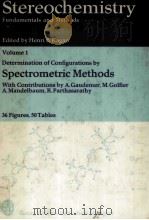
- STEREOCHEMISTRY FUNDAMENTALS AND METHODS VOLUME 1 DETERMINATION OF CONFIGURATIONS BY SPECTROMETRIC
- 1977 GEORG THIEME PUBLISHERS STUTTGART
-
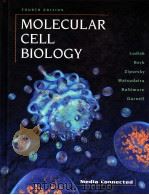
- MOLECULAR CELL BIOLOGY
- MEDIA CONNECTED
-
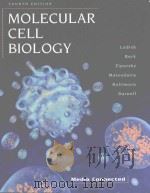
- MOLECULAR CELL BIOLOGY FOURTH EDITION
- 1999 W.H.FREEMAN AND COMPANY
-
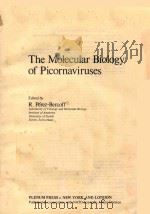
- THE MOLECULAR BIOLOGY OF PICORNAVIRUSES
- 1979 PLENUM PRESS
-
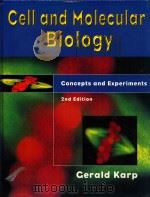
- CELL AND MOLECULAR BIOLOGY 2ND EDITION
- 1999 JOHN WILEY & SONS INC
提示:百度云已更名为百度网盘(百度盘),天翼云盘、微盘下载地址……暂未提供。➥ PDF文字可复制化或转WORD


